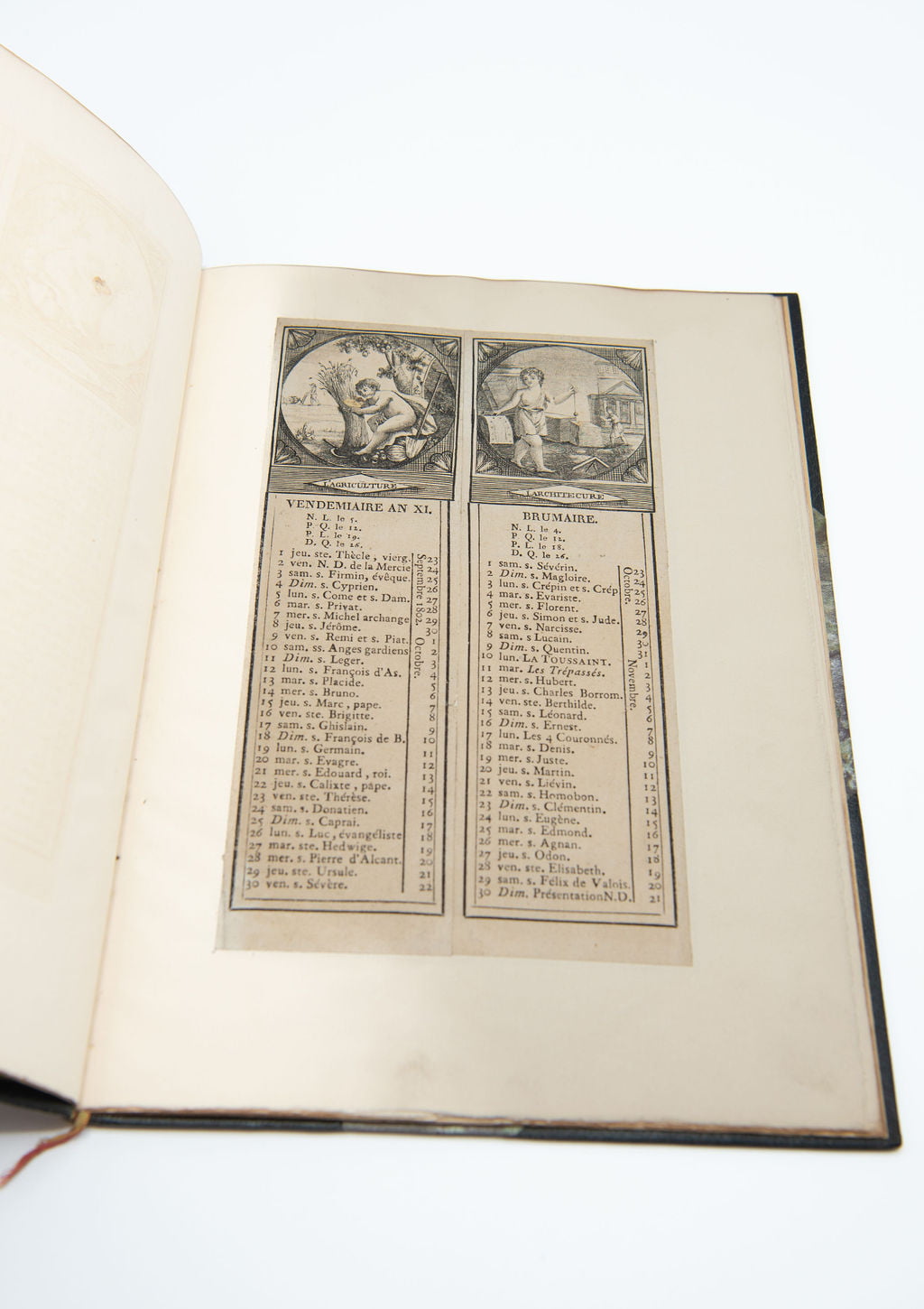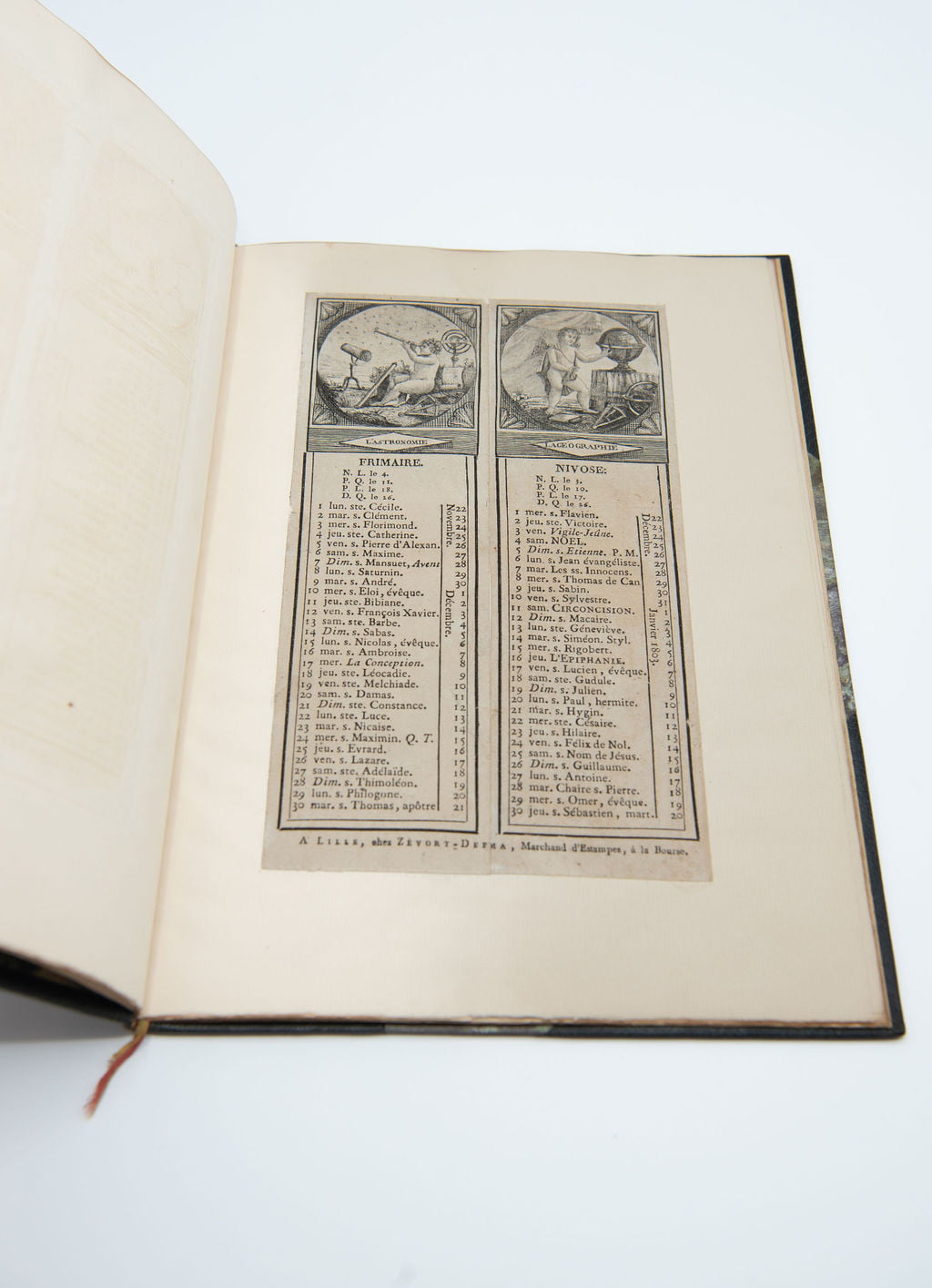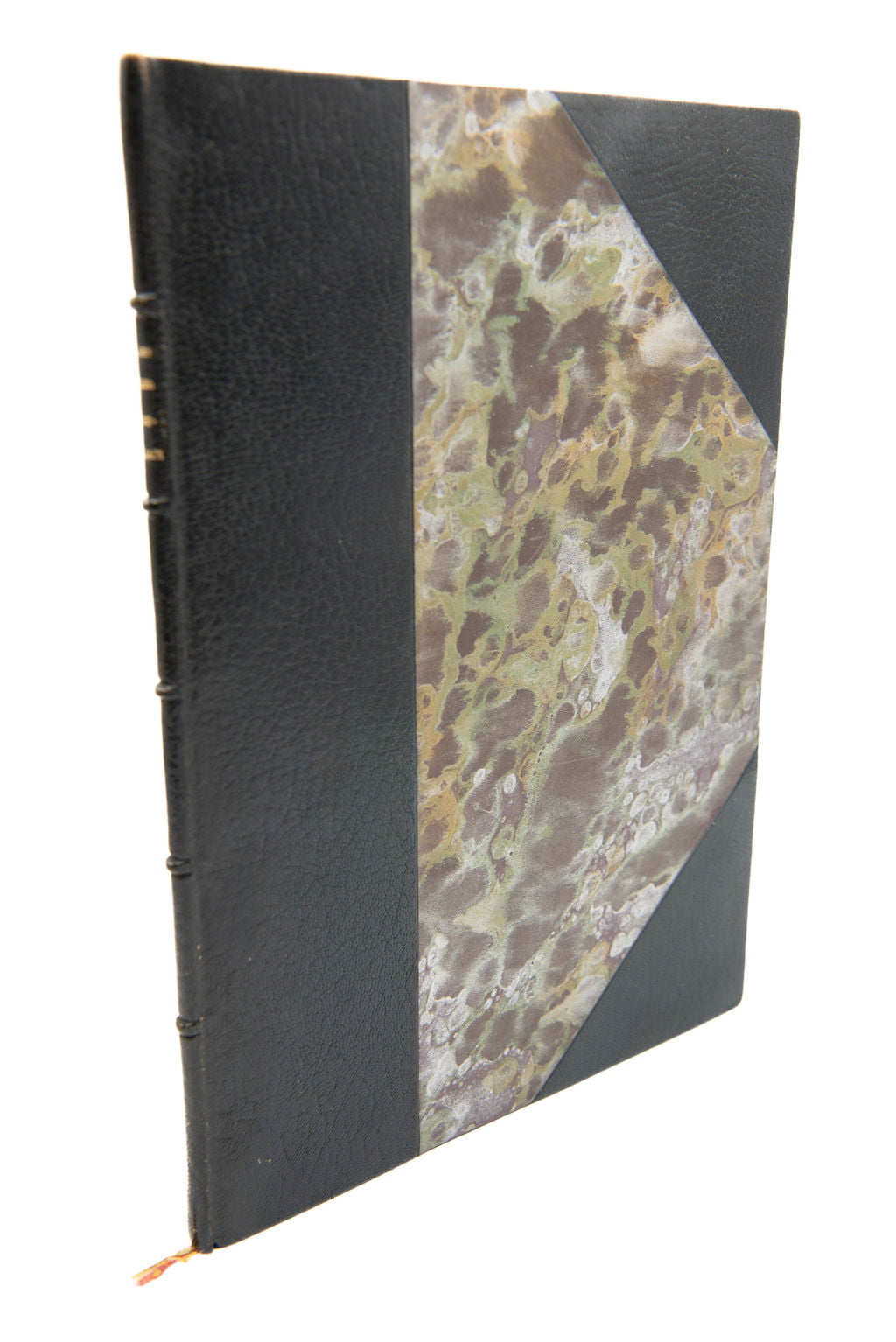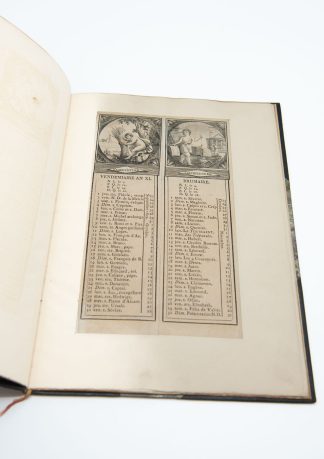FRENCH REPUBLICAN CALENDAR.
L’an 11 de la republique, (1804)
Lille, chez Zevort- Depma, marchand d’Estamps a la Bourse, [1804]£4,950.00
Folio. 12 calendars months, mounted in pairs, on six leaves. Roman letter. Printed within woodcut rule, each with charming engraved headpiece of Putti representing the different republican months as various figures of science or art, such as ‘Agriculture’, ‘Astronomie’ etc. Light age yellowing. Engraved and hand coloured bookplate of ‘Jpe. A. Cattaui Pacha’ on pastedown. Very good, in handsome green three-quarter crushed morocco over marbled boards by ‘Iseux Heriters de Simier’, spine with raised bands, title gilt lettered, red and yellow silk marker.
A very rare and charming example of a French Republican calendar, printed a year before they reverted back to the original Gregorian. The calendars were officially started at the beginning of the Republican Era, the day the French First Republic was proclaimed, one day after the Convention abolished the monarchy. The new calendar completely revised the old system of managing time. There were twelve months, each divided into three ten-day weeks called décades. The tenth day, décadi, replaced Sunday as the day of rest and festivity. The five or six extra days needed to approximate the solar year were placed after the months at the end of each year and called complementary days. This arrangement was an almost exact copy of the calendar used by the Ancient Egyptians, though in their case the beginning of the year was marked by summer solstice rather than autumn equinox. Each day in the Republican Calendar was divided into ten hours, each hour into 100 decimal minutes, and each decimal minute into 100 decimal seconds. Thus an hour was 144 conventional minutes, a minute was 86.4 conventional seconds, and a second was 0.864 conventional seconds. However this decimal time did not catch on. Mandatory use of decimal time was officially suspended 7 April 1795, although some cities continued to use decimal time as late as 1801.
The Catholic Church used a calendar of saints, which named most days of the year after an associated saint. To reduce the influence of the Church, Fabre d’Églantine introduced a Rural Calendar in which each day of the year had a unique name associated with the rural economy, stated to correspond to the time of year. Every décadi (ending in 0) was named after an agricultural tool. Each quintidi (ending in 5) was named for a common animal. The rest of the days were named for “grain, pasture, trees, roots, flowers, fruits” and other plants, except for the first month of winter, Nivôse, during which the rest of the days were named after minerals.
This Calendar is of particular interest as it has abandoned the Republican names and reverted to Saints becoming a hybrid between the Republican and the Gregorian. It also has both form of numbering. It is clear the radical Republican calendar had not taken off particularly as it was too difficult to manage within a larger European context. The official calendar reverted to the Gregorian a year later.
Such calendars, unsurprisingly for such ephemeral pieces, are extremely rare.
In stock





